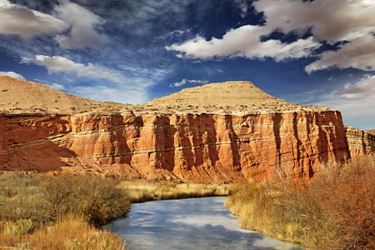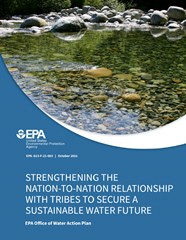Working Toward A More Sustainable Water Future For Tribal Nations


Dating back to colonial times, Native Tribes in North America have often watched wide-ranging access to the land and water of their forefathers diminish over time. Although various doctrines, policies, and settlements have attempted to restore some of those opportunities, the bottom line is that many of today’s tribal territories do not enjoy the same water quality as adjacent states or communities. A new U.S. EPA action plan is designed to narrow that gap.
A Historical Problem
Access to clean-water infrastructure among Native Americans has typically lagged behind that of the rest of the United States. According to this Arizona Republic article, “researchers with U.S. Water Alliance and DigDeep found that race is the ‘strongest predictor’ of water access and that Native American households are 19 times more likely than white households to lack complete plumbing.”
In a similar vein, this report produced for the Water And Tribes Initiative notes that Native Americans have had a 3.5X higher rate of COVID-19 infections and a 2.4X higher death rate from COVID-19 than non-Hispanic white citizens, influenced in large part by limited access to running water. And as this earlier Water Online article spells out, Native American Tribal governments are not always part of the solution when it comes to allocating water resources.
Fortunately, some progress is being made in the form of proposed new funding and a new EPA policy document (Figure 1) targeted to 574 Tribal Nations and Alaska-Native villages.
Figure 1. This recent U.S. EPA document outlines the latest plans to support tribal nations in protecting and managing valuable water resources. (Source: U.S. EPA)
Making Up For Lost Time
The recently issued EPA document, Strengthening The Nation-To-Nation Relationship With Tribes To Secure A Sustainable Water Future, attempts to address historical inequalities when it comes to water availability and water quality among Tribal communities. It is based on the premise that the United States government has a trust responsibility to support Tribal Nations in the protection and stewardship of water on their lands. It reflects longstanding challenges that have been brought to the forefront because of the COVID-19 pandemic.
The action plan outlined in that EPA document was designed to address historical shortcomings concerning water-related practices and infrastructure among Tribal Nations, including:
“… a significant shortfall of funding to address water infrastructure needs;
“… a lack of water quality standards that enable full implementation of the Clean Water Act on Tribal waters; and
“… the need for training and professional development of qualified Tribal water and wastewater operators.”
The plan focuses on four primary areas:
- ”Promote Robust Coordination And Meaningful Consultation With Tribal Nations.” In the short term, that includes better input gathering and consultation on a variety of rules and policies, as well as better communication through a new website tailored specifically for Tribal environmental professionals.
- ”Strengthen And Expand Water Governance In Indian Country.” The intent in this area is to strengthen source-water protections, to implement Clean Water Act programs in Tribal territories in a manner similar to how they are treated in the individual states, and to pave the way for Tribes to be more fully engaged in the Clean Water Act Section 303(d) Impaired Waters and Total Maximum Daily Load Program.
- ”Increase Infrastructure Funding And Capacity Development.” This focal point of the document addresses the need to provide financial support and set asides for management and technical implementation of better water and wastewater infrastructure. It also addresses efforts to bolster water-quality monitoring and electronic reporting from Tribal lands, as part of the EPA’s National Aquatic Resource Surveys.
- “Honor The Federal Trust Responsibility And Protect Tribal Reserved Rights Related To Water Resources.” The final focal point of the document addresses consistency between Tribal-run authorities who administer their own water-quality standards and a federal baseline water quality standard for Tribal reservations that do not yet have EPA-approved standards in place.
A Positive Step Forward
The new EPA water-action plan is in line with the 1984 EPA policy for dealing with Tribal Nations on a ‘government-to-government’ basis for the administration of environmental programs. That policy is to deal directly with each Tribal government instead of working with them as a subset of a state government. The new action plan attempts to enable the best practices of Clean Water Act and Safe Drinking Water Act guidelines among Tribal communities without infringing on their historically established sovereignty.
Native American communities interested in additional resources for small water-system operations can learn more from the Water Online Solutions Center by performing a keyword search under any of the Water or Wastewater dropdown menu headings across the top of the Water Online home page.

